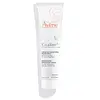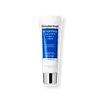What's inside
What's inside
 Key Ingredients
Key Ingredients

 Benefits
Benefits

 Concerns
Concerns

 Ingredients Side-by-side
Ingredients Side-by-side

Water
Skin ConditioningCaprylic/Capric Triglyceride
MaskingParaffinum Liquidum
EmollientGlycerin
HumectantHydrogenated Vegetable Oil
EmollientZinc Oxide
Cosmetic ColorantPropylene Glycol
HumectantPolyglyceryl-2 Sesquiisostearate
EmulsifyingPEG-22/Dodecyl Glycol Copolymer
EmulsifyingAluminum Stearate
Cosmetic ColorantAquaphilus Dolomiae Ferment Filtrate
Skin ConditioningArginine
MaskingBeeswax
Emulsion StabilisingCopper Sulfate
Skin ConditioningMagnesium Stearate
Cosmetic ColorantMicrocrystalline Wax
Emulsion StabilisingTromethamine
BufferingZinc Sulfate
AntimicrobialWater, Caprylic/Capric Triglyceride, Paraffinum Liquidum, Glycerin, Hydrogenated Vegetable Oil, Zinc Oxide, Propylene Glycol, Polyglyceryl-2 Sesquiisostearate, PEG-22/Dodecyl Glycol Copolymer, Aluminum Stearate, Aquaphilus Dolomiae Ferment Filtrate, Arginine, Beeswax, Copper Sulfate, Magnesium Stearate, Microcrystalline Wax, Tromethamine, Zinc Sulfate
Water
Skin ConditioningGlycerin
HumectantCaprylic/Capric Triglyceride
MaskingPentaerythrityl Tetraisostearate
EmollientDiethylhexyl Carbonate
EmollientAlpha-Glucan Oligosaccharide
CleansingDimethicone
EmollientCetyl Dimethicone
EmollientButyrospermum Parkii Butter
Skin ConditioningCetearyl Olivate
Canola Oil
EmollientXylitylglucoside
HumectantSorbitan Olivate
EmulsifyingCetearyl Alcohol
EmollientButyrospermum Parkii Butter Extract
Skin ConditioningPanthenol
Skin ConditioningAnhydroxylitol
HumectantPolymnia Sonchifolia Root Juice
Skin ConditioningTocopheryl Acetate
AntioxidantAllantoin
Skin ConditioningSucrose Stearate
EmollientHydrogenated Coco-Glycerides
EmollientGlyceryl Stearate
EmollientXylitol
HumectantMaltodextrin
AbsorbentGlucose
HumectantHydrolyzed Hyaluronic Acid
HumectantLactobacillus
Skin ConditioningAmmonium Acryloyldimethyltaurate/Vp Copolymer
Citric Acid
BufferingPhenoxyethanol
PreservativeSodium Benzoate
MaskingWater, Glycerin, Caprylic/Capric Triglyceride, Pentaerythrityl Tetraisostearate, Diethylhexyl Carbonate, Alpha-Glucan Oligosaccharide, Dimethicone, Cetyl Dimethicone, Butyrospermum Parkii Butter, Cetearyl Olivate, Canola Oil, Xylitylglucoside, Sorbitan Olivate, Cetearyl Alcohol, Butyrospermum Parkii Butter Extract, Panthenol, Anhydroxylitol, Polymnia Sonchifolia Root Juice, Tocopheryl Acetate, Allantoin, Sucrose Stearate, Hydrogenated Coco-Glycerides, Glyceryl Stearate, Xylitol, Maltodextrin, Glucose, Hydrolyzed Hyaluronic Acid, Lactobacillus, Ammonium Acryloyldimethyltaurate/Vp Copolymer, Citric Acid, Phenoxyethanol, Sodium Benzoate
 Reviews
Reviews

Ingredients Explained
These ingredients are found in both products.
Ingredients higher up in an ingredient list are typically present in a larger amount.
This ingredient is an emollient, solvent, and texture enhancer. It is considered a skin-softener by helping the skin prevent moisture loss.
It helps thicken a product's formula and makes it easier to spread by dissolving clumping compounds.
Caprylic Triglyceride is made by combining glycerin with coconut oil, forming a clear liquid.
While there is an assumption Caprylic Triglyceride can clog pores due to it being derived from coconut oil, there is no research supporting this.
Learn more about Caprylic/Capric TriglycerideGlycerin is already naturally found in your skin. It helps moisturize and protect your skin.
A study from 2016 found glycerin to be more effective as a humectant than AHAs and hyaluronic acid.
As a humectant, it helps the skin stay hydrated by pulling moisture to your skin. The low molecular weight of glycerin allows it to pull moisture into the deeper layers of your skin.
Hydrated skin improves your skin barrier; Your skin barrier helps protect against irritants and bacteria.
Glycerin has also been found to have antimicrobial and antiviral properties. Due to these properties, glycerin is often used in wound and burn treatments.
In cosmetics, glycerin is usually derived from plants such as soybean or palm. However, it can also be sourced from animals, such as tallow or animal fat.
This ingredient is organic, colorless, odorless, and non-toxic.
Glycerin is the name for this ingredient in American English. British English uses Glycerol/Glycerine.
Learn more about GlycerinWater. It's the most common cosmetic ingredient of all. You'll usually see it at the top of ingredient lists, meaning that it makes up the largest part of the product.
So why is it so popular? Water most often acts as a solvent - this means that it helps dissolve other ingredients into the formulation.
You'll also recognize water as that liquid we all need to stay alive. If you see this, drink a glass of water. Stay hydrated!
Learn more about Water